
I’m off to Vancouver! I’ll be there from Wednesday afternoon to Monday afternoon, primarily to catch HackVAN. Want to catch up? Drop me a line or tweet!

I’m off to Vancouver! I’ll be there from Wednesday afternoon to Monday afternoon, primarily to catch HackVAN. Want to catch up? Drop me a line or tweet!
Zibaba is an app development company that develops an app that lets you put a shop on your Facebook fan page. Their app takes advantage of the Facebook social graph in order to get your Facebook friends and fans talking about your shop and your products, and it also provides a comprehensive set of analytics tools so you can collect extensive marketing data. Zibaba Facebook shops have a group offer feature, which lets your Facebook fans band together and take advantage of group offers, as well as an affiliate network that allows other shopowners to market your stuff or even your storefront on a revenue-share basis.
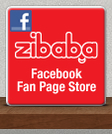 Zibaba have a Shopify app called Zibaba Facebook Storefront that lets Shopify shopowners expand their reach into the Facebook market (which as of this writing, was over 730 million people according to Socialbakers). We asked Zibaba about their Shopify app, and their answers appear below.
Zibaba have a Shopify app called Zibaba Facebook Storefront that lets Shopify shopowners expand their reach into the Facebook market (which as of this writing, was over 730 million people according to Socialbakers). We asked Zibaba about their Shopify app, and their answers appear below.
Zibaba Facebook Storefront gives Shopify customers the opportunity to duplicate their Shopify store and open a store directly from their Facebook Fan Page within seconds.
Shopify customers have the ability to choose from customized backgrounds, upload customized banners for additional branding and utilize all of the additional promotional marketing tools offered by Zibaba. The additional tools include running Group Offers, Coupons, Fan Only Discounts and joining the Zibaba Social Affiliate Network in order to increase marketing efforts and drive sales. Additionally, every product within the store utilizes all of the social interactions of Facebook such as ‘like’, ‘ask advice’, ‘comment’ and ‘share’.
Zibaba Facebook Storefront lets you:
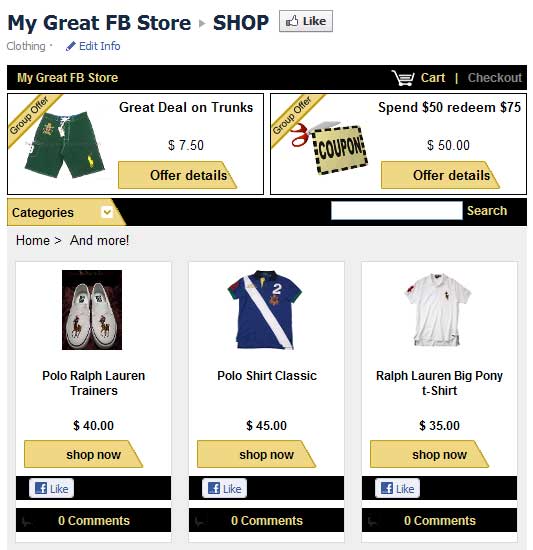
Screen capture of an example Facebook store based on a Shopify store.
As a shopowner, you’ll want to use Zibaba Facebook Storefront because it’ll help you in these ways:
The idea for the app came from bringing store fronts to where the largest online mass of surfers gather every day of the week: Facebook!
The app took only two weeks to build, but six weeks of intensive QA to ensure that the experience for Shopify customers would be smooth and easy.
 You can find out more about it on the Zibaba Shopify App page in the App Store.
You can find out more about it on the Zibaba Shopify App page in the App Store.
You should also check out the video below, which shows you how you create a Zibaba-powered shop in Facebook based on your Shopify shop:
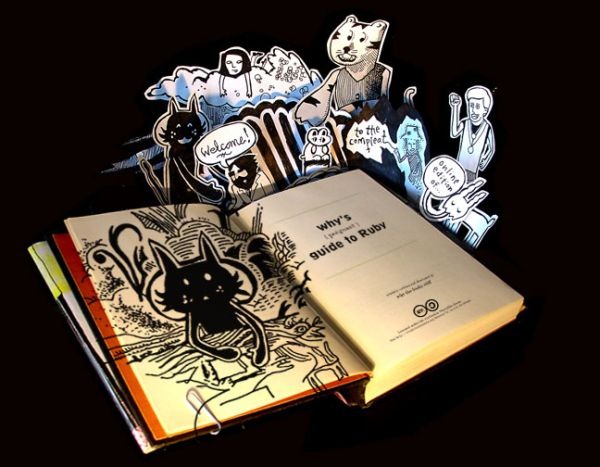
Clever programmer. Multimedia and performance artist. Whimsical writer. Oddball performer. Howard Hughes-style recluse. All of these phrases are apt descriptions of the guy most of us know only as why the lucky stiff, or _why for short.

If _why had a personal motto, it might be “Be bold, be brief, be gone.” The bold part was plain to see. His Ruby tutorial, why’s (poignant) guide to Ruby, broke away from the style of your typical programming books and went for the wild and whimsical. Only _why would take a topic like metaprogramming — something that confounds a number of experienced developers, never mind the newbies he was trying to reach in his book — and turn it into a fantastic adventure game exercise, complete with comics. Few developers have the breadth of skill and interest to make projects like Try Ruby (a browser-based Ruby shell with instructional guides) to Camping (a Rails-like web app microframework smaller than 4K) to Shoes and Hackety Hack (a UI toolkit for “web-like desktop apps” and a development environment to teach children programming) to Park Place (a “nearly complete clone” of Amazon’s S3). There may be people out there who’d be able to pull off a music-and-programming performance like the one he did at the first RailsConf, but they haven’t yet presented themselves to the world.

The “brief” and “gone” bits take a little more explaining. _why’s notoriety rose with Ruby’s popularity, which in turn was connected to Ruby on Rails. I remember reading some posts on one of his blogs, RedHanded, as far back as late 2003, and the (poignant) guide surfaced in 2004 and found its way into print in 2005, when the chapter A Quick (and Hopefully Painless) Ride Through Ruby (with Cartoon Foxes) appeared in the Apress book The Best Software Writing I: Selected and Introduced by Joel Spolsky. His music-and-code extravanganzas at South by Southwest, O’Reilly’s Open Source conference and the first RailsConf cemented his rep as the programmer who was also a performance artist and by 2008, people were seeking him out for all sorts of things, from personal appearances (Pete Forde tried to get him to come to RubyFringe, but convincing him to leave the US proved to be impossible) to commissioning body art (Leah Culver got him to design a tattoo for her).


All in all, _why’s popular presence on the web spans about 5 or 6 years.

For reasons still unknown to the Ruby community at large — perhaps Matz knows and is sworn to secrecy — _why “disappeared” on August 19, 2009. It’s not that he disappeared in the D.B. Cooper sense, but in the J.D. Salinger sense: not as a legal missing person, but as a person determined to remove himself and his activities from the public eye. In the span of a day, he removed as many traces of his online presence as he could: the blogs, the sites, the projects. Luckily, there’s a lot of his work floating around thanks to his open sourcing and Creative Commons-ing of his works and the curation of many techies who appreciated them.

A year after his disappearance from the online world, Glenn Vandenburg declared the first anniversary of his disappearance as “Whyday”. Whyday is a day to celebrate _why’s contributions to the culture and communities that have grown around the Ruby programming language and all the software built upon it. “We in the Ruby community wish him well,” goes the text on the Whyday site, “but we really miss him.”
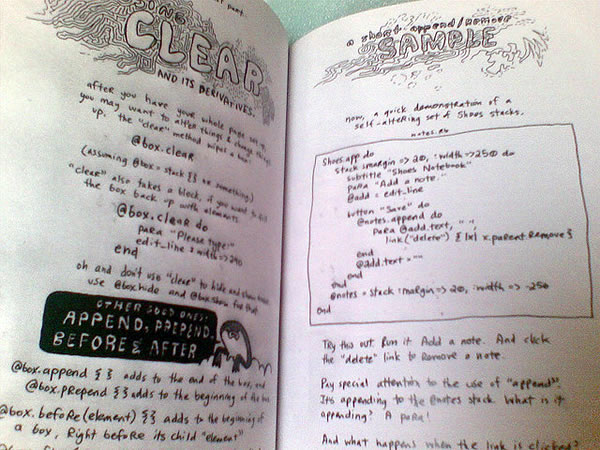
The Whyday site goes on:
Why gave us a lot of cool software and other things, but what he really gave to the Ruby community was a spirit of freedom, whimsy, and creativity. When Why took the stage at the first RailsConf, in 2006, he strapped on his guitar, walked to the microphone, and yelled “Put your best practices away!”
Discipline, care, and responsibility are important; we owe our customers, employers, team members, and families to take our work seriously. At the same time, though, we need to play. If we don’t occasionally break out of the mold of our “best practices,” we can easily miss many wonderful ideas, some of which can bear rich fruit (just as Camping and Hpricot led to Sinatra and Nokogiri).
This year, on August 19, celebrate Whyday. Set aside that day to remember Why’s contributions to our community and culture by hacking just for the fun and joy of it.

Among the things people were encouraged to do on Whyday were:
I made a note of WhyDay on my personal tech blog, Global Nerdy, as well as the blog I got paid to write for (I was a Microsoft employee at the time). I didn’t get the chance to do as much as I’d like in the spirit of Whyday, probably because I was knee deep in getting ready for TechDays, a series of cross-country conferences run by The Empire.
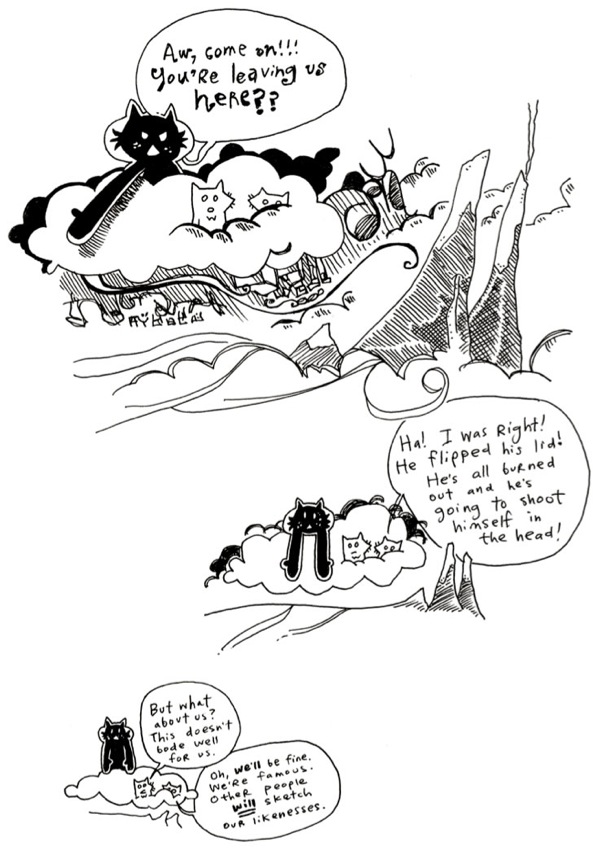
Here we are, a year after the first Whyday. I’ve done some quick searching and haven’t found any mention of celebrating Whyday this year, so I’ve taken it upon myself to spread the word. It probably helps that I’m no longer at Microsoft and now in Shopify, which not only builds stuff on Ruby and Rails; it was also co-founded by an original member of the Rails core team, and people here are writing the next edition of Rails in a Nutshell. This place just oozes Ruby.
_why might not want to be celebrated, but in my mind, _why isn’t the real reason that Whyday should be celebrated anyway. I think it’s more about the spirit of what _why did: really getting to know the tools you’re using, helping people understand those tools using unorthodox means whenever conventional means just don’t get the point across, and building great tools when the tools you want don’t exist.
It’s about finding joy and delight in your craft, and bringing to it a sense of play. It’s about making things better. All that is in the spirit of why I quit a high-paying, cushy job and joined a rag-tag team of techies in a startup, and this year, I’m going to try to celebrate Whyday — this Friday, August 19th, 2011, a little more properly.
How about you?
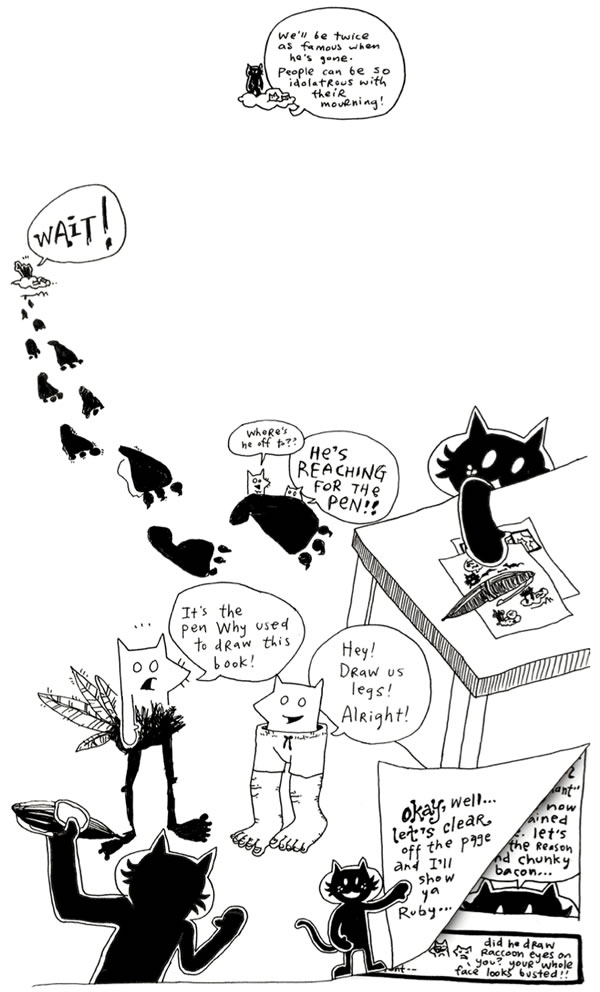

Creative Commons photo by Casey Yee.
This week, a number of Shopifolks will be in Vancouver. If you see us, come say hi!
Tobias Lütke, our CEO, and Harley Finkelstein, our CPO (Chief Platform Officer) will be attending the sold-out GROW Conference 2011, which will be taking place at the Vancouver Convention Centre’s West Building (the media building for the Olympics) from Wednesday, August 17th through Friday, August 19th. This is the must-attend conference for Canadian startups and entrepreneurs. I’ll leave it to my friend David Crow to describe it:
The Grow Conference is a unique three-day conference that brings together the top minds in business, entrepreneurship, technology, and capital to inspire and engage the next generation of disruptive entrepreneurs. It doesn’t matter if your business is on or offline, the next-gen entrepreneur knows where their customers are and how to engage them. Today’s entrepreneurs are creating new opportunities, disrupting age-old markets, leveraging technology on their path to being tomorrow’s leaders. The Grow Conference is bringing the best minds of Silicon Valley and Canada together to share lessons learned and inspire action. Be part of this entrepreneurial revolution as we work together to drive innovation for the future. GROW is more than a conference, it’s a movement.
All the tickets that were made available online are sold out. For you super-procrastinators with some money to burn, there will be a very limited number of tickets at the door available at the door for US$595.
David Underwood, Developer Advocate, and Yours Truly (Joey deVilla, Platform Evangelist) will be sneaking into the GROW Conference after-party, but the real reason we’ll be there will be for the HackVAN Hack Day taking place at the Mozilla offices (163 West Hastings, Suite 200, Vancouver) on Saturday, August 20th. HackDays are events that are being held across Canada where developers get together, and working either in teams or solo, build cool applications in a day using publicly available APIs. If you’re a developer of any level of experience, from just starting out to guru-level, come out, make new friends and connections and get a chance at winning some cool prizes (up for grabs: a MacBook Air, iPad 2 and Kindle).
Registration for this event is a mere $10 — register now, and we’ll see you on Saturday!
Richard Walker has taken the “War Between Developers, Designers and Project Managers” graphic and stepped it up by adding QA to the mix:

You’re probably aware that Shopify is written using Ruby and Rails; after all, we were co-founded by a former member of the Rails Core team. You might work using another programming language and framework, and we’re cool with that. That’s why we have a RESTful API that lets you use any programming language that has some built-in ability or library to communicate via HTTP.

We want to make sure that developers everywhere can build Shopify apps — web applications that use the Shopify API to extend the capabilities of Shopify stores — in as many programming languages as possible. Here are the ones that we’re aware of:
We’d like to see more. Where’s the .NET one, for starters? We know that there are .NET developers building Shopify apps out there.
If you know of any other libraries out there, please let us know in the comments or send me some email. If you’ve got Shopify API wrapper code in any language and it’s not listed above, please consider releasing it to the community on Github, Codeplex or some other open source sharing site and send us the link. We’ll reward you with high fives, praise, and I’m working on getting some more tangible rewards as well.
Share the code, share what you know, and let’s help create a great developer ecosystem!
While I have annoyed more than my fair share of higher-up executives at Microsoft, as dramatized in the photo below:

…there’s one guy who I’m quite sure still thinks I’m a righteous dude: Charlie Kindel, pictured below:
Charlie has been at Microsoft longer than there’s been a World Wide Web: here’s been there for 21 years, and the very first web page at CERN was put online only 20 years ago this past weekend. If you put it in terms of a typical run at a high-tech company, Charlie’s longevity at Microsoft is like being reincarnated 7 times.
I met him while he was in his final role. In the great tradition of unwieldy Microsoftian names, his title was “Partner Group Program Manager for the Windows Phone Application Platform and Developer Experience”, which he would acronymize into “PGPMWPAPDE” on the title slide of his presentations to great comic effect. It was his responsibility to get developers to build apps for Windows Phone 7. This was an unenviable task, as Microsoft had fallen asleep at the wheel with mobile, tragically underestimated Apple (“There’s no chance that the iPhone is going to get any significant market share,” said Steve Ballmer in 2007, “No chance”) and were now playing a game of catch-up where the front runner had a three-year lead and were pretty much defining what a smartphone was.
Charlie did a fantastic job of rallying the troops. He gathered us Windows Phone Champs — a hand-picked team of evangelists, developers and tech writers — and not only walked us through the fine points of developing for Windows Phone 7, but also instilled in us a feeling that yes, this phone is worth championing. It’s one thing to go over technical details; it’s entirely another thing to get the troops revved up, especially against some pretty long odds.
He was also good at recognizing the Champs’ contributions and helping them play to their strengths. At the MIX 2010 conference, he sought me out and made sure I had one of the rare and coveted “I [heart] Windows Phone” stickers for my accordion, which is still there even though I’m no longer a Sith Lord with The Empire:

For his work, dedication and especially his support and vote of confidence, I will always be grateful to Charlie.
The word’s out that after 21 years and a gazillion projects at Microsoft, Charlie’s leaving to launch a startup. It’s still in stealth mode, but he’s provided a hint in his farewell blog post, where he says it’ll be about “sports, advertising, mobile, social-networking, and, of course, the cloud”.
True to form, he left the Phone team with this message:
To the Windows Phone team: I may stop using some Microsoft products now that I’m out of here. But not Windows Phone. The BEST product Microsoft has ever built. Do not let up!
Well said. Charlie’s one of the reasons I still hold onto my Samsung Focus and keep my Windows Phone 7 dev tools up to date.
Charlie, good luck with the startup — I’ve got an idea of what that’s like — thanks for everything, and I’ll see you out there!